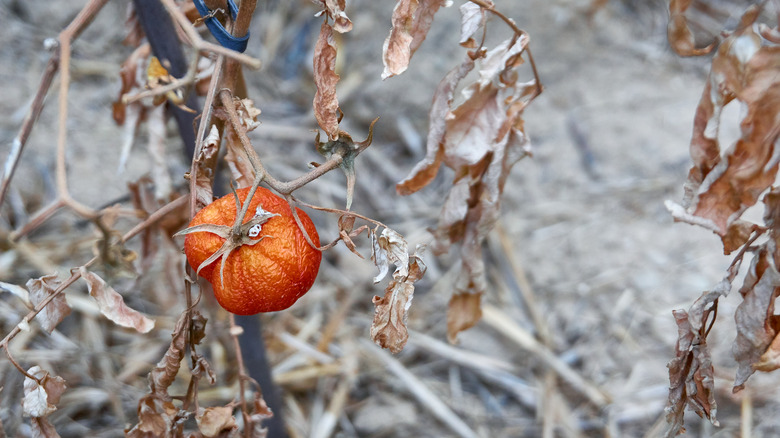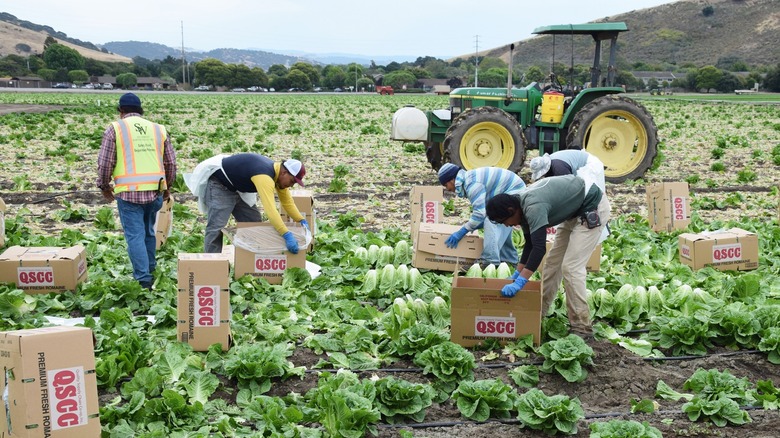How Climate Change Is Disrupting California's Central Valley Crops
Temperature increases due to climate change are affecting agricultural areas across the U.S., reports Forbes, and California's Central Valley is being hit especially hard. SafeHome reports that California is at high risk for extreme temperatures, droughts, wildfires, and flooding over the next few decades. It is also above the national average on the Climate Change Risk Index.
Central Valley is best known for its production of grains, hay, tomatoes, citrus, nuts, grapes, and vegetables, per the United States Geological Survey. The site estimates that the average yearly crop value is around $17 billion, and produces nearly a quarter of the nation's food supply, despite only making up about 1% of the nation's farmland. They state that over 250 crops grown in this region are at risk.
Increasing temperatures and changing weather patterns associated with climate change are now affecting California's Central Valley crops. The foods you love could be impacted.
Heatwaves kill crops
According to the United States Geological Survey, "40% of the Nation's fruits, nuts, and other table foods" are at risk. Some of the most affected crops include citrus, almonds, olive oil, and grapes, per Forbes. They report that increased temperatures due to climate change have impacted the quantity and quality of crops in recent years. Crops produced in hotter temperatures tend to have less proteins and vitamins.
Farmers have also lost crops due to droughts and crop burning. As reported by the LA Times, dryer weather and frequent water shortages are to blame for dying crops, and farmers burn the failed plants as a cheaper alternative to removing them. The smoke and haze created by these mass burnings can impact the air and make it harder to breathe for people living nearby.
As temperatures continue to rise, climate change continues to impact California's Central Valley crops, which could potentially cause food shortages in the future.

